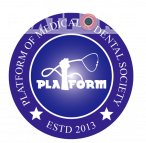Contributor: Dr. Suman Chowdhury, Ex- Medical Officer, Chitagong Medical College Hospital

Fever:
That is the increased body temperature more than 38°C.
Remember: Fever is not a Diagnosis, rather a Symptom (and a sign).
Patient visit to the GP with this symptom very often.
Lets discuss on it here
As a primary physician (GP) the first task is to document it. Whether the patient actually has got fever or not.
Maximum patient may not have fever. What they try to complain is a feeling of fever.
(Which may signifies few things:
1. Feeling of unwellness (may be due to):
– Anaemic conditions
– Nutritional deficiencies etc
2. Somatoform disorders etc
Anyway, complaining of fever doesn’t necessarily mean fever.
So, we should first establish it with due respect to him. Just don’t neglect the patient’s concern. If, he is very much confident enough of having fever (with document), you may proceed. Otherwise, u have to measure it at chamber.
Say, a patient has got (true) fever. Then the next task will be to locate the source (cause) of it. We the physician try to find out by asking different questions.
Depending upon the duration it may be acute (14days) or chronic. So, if we consider acute one, we should focus on Viral fever, RTI (viral+Bacterial), UTI, Enteric Fever, acute gastroenteritis, Drugs, BSI (blood stream infection), Others.
If acute fever:
Ask for:
1. Cough
2. Sore throat
3. Sputum colour and amount
4. Urgency of micturition
5. Dysuria
6. Any rash, bodyache, Head ache
7. Associated features, bowl habit, features of hepatitis (anorexia, weakness, jaundice etc)
8. Relieves with sweating, Chills and rigor etc.
9. Pattern of Fever:
(- High grade
– Intermittent
– Low grade
– Step ladder
– Continued fever etc. )
10. Travel history
11. Drug history
12. Family history of same attack
13. Recurrence of same attack etc.
Then proceed accordingly. Keep in mind that most common cause is due to Viral fever.Though sometimes, others features mask it!
Fever without localising signs:
Malaria
Viral fever
Sometimes Entetic (initially) etc.
Interestingly, the patient may be actually of a chronic disease like TB, SLE (Systemic Lupus Erythematosus), MALIGNANCY (both sloid organs and haematological), other connective tissue disease etc !!!
Routine Ix of AFI (Acute Febrile Illness):
1. CBC with ESR
2. CXR
3. Sputum for Gram stain,
4. Urine RME
5. ICT for Malaria
6. MPC
7. IgG+IgM anti Dengue antibody (in highly suspected cases)
8. If hepatitis:
a) HBsAg
b) SGPT
c) S. Bilirubin
d) Other virus (if HBsAg is negative and strong suspicion of other etiology).
If all are inconclusive, Further Ix need to be advised.
Though not all patient require same Ix profile. The history and examination will guide us.
Some clue to Dx viral fever:
Body ache
High grade fever (continuous), sometimes abrupt rise of temperature
Running nose (flu like features)
Disproportionately more weakness, asthenia
No focal source of infection
Well, Enteric fever is one for which the physician has to face some troubles. As its diverse wayof presentation like just with Abdominal complaints (with fever) to sepsis (with MOF= Muti Organ Failure)!!
So, keeping that in mine, any fever lasting more than a week should warrant us to go for such Dx.
And should review the physical findings again and compare them with previous findings.
For example:
1. Alteration of bowl (normal to constipation etc)
2. Step ladder pattern (seldom seen )
3. Appearance of rash (rarely seen )
4. No focal clue
5. Appearance of splenomegaly
6. Appearance of jaundice.
Then comes abnormalities in Ix:
1. Lymphopenia in CBC
2. Blood culture positivity
3. Cholestatic LFT
4. Splenomegaly in USG etc.
Yes. We can depending o experience, clinical judgement, local or regional microbial data etc. Later, guided by Ix findings and identification of sources.
From my experience I saw, its very difficult (sometime) to pick up the right antibiotic to control fever in Enteric pathology!!!
But, of course initial drugs should cover the enteric pathogens then according to culture report.
Focal features:
A) RTI:
1. Fever
2. Productive cough ( may expel in pot or in nearby place) with change of colour and amount
3. Presence of blood
4. Pleuritc chest pain
4. Exam:
* Tachypnea
* Features of consolidation ( Bronchial breath sound on auscultation and dullness on percussion), Effusions (stony dull on percussion and reduced breath sound during auscultation), pleural rub.
B) UTI:
* Tenderness over pubic region
* Hazy urine (if kept in pot), odour
* Haematuria
* Any features of local infection (Discharging pus, etc)
C) Enteric:
(Well!! A lot)
But,
* Relative bradycardia
* Splenomegaly
* Rash
* Jaundice
* other organ involvement etc
D) Viral:
1. Rash
2. Arthralgia
3. Jaundice
4. Generalised body ache
5. Headache
6. Severe weakness etc
On general examination:
1. Anaemia
2. Jaundice
3. Clubbing
4. Lymphadenopathy
5. Inflammed tonsils
6. Rash
7. Neck rigidity
8. Pigmentation etc.
In GP, methodical clinical examination can’t be (most often) be done. So, focused exam is necessary and for that rational questions to be asked in history.
In case of TB:
Simply we can proceed like this:
1. Pulmonary or extra pulmonary. 2. If pulmonary, smear positive or negative
3. Whether fresh case or corrupted one (like defaulter, failure, re infection etc)
4. Disseminated or not
5. According to organ involvement:
* Neurological
* Rheumatological
* Abdominal
* Renal etc.
But, surely it is beyond the level of GP.
Then just to follow the National TB Guidelines.
Meningitis has got typical features and surely the Rx is beyond the scope of GP and should be admitted.
History:
Immunocompromised state
Extreme of age
Evidence and history of any head neck ear infections etc
Symptom:
Fever
Impaired consciousness
Headache
Convulsion
Unconscious (though more common in encephalitis)
Sign:
Neck rigidity
Kernig’s sign positive
Cranial never palsy (in basal meningitis) etc.
I think referral criteria for Fever should be like this:1. Rapid deterioration of conditions2. Prolong duration (14 days)3. Systemic involvement (neuro+nephro etc)4. Sepsis5. Any connective tissue disease6. Presence of others co morbidities, DM with Fever, Pregnancy with prolong fever, etc7. Patient demand8. Local logistic support9. Availability of proper Ix facilities.
Scope of Malpractice:
1. Prescribing antibiotic whether true fever is present or not, whether viral or not, whether internal connective tissue disease is present or not
2. Short duration of drugs
3. Non focused drugs (RTI treated like UTI etc)
5. Very early and injudicious use of steroids
6. Injudicious Ix (for UTI giving CXR, For Dengue giving antibody test on just 1st day of fever, not thinking of Malaria etc)
7. Irrelevant Ix
8. Unnecessary referral to pvt clinics
9. Giving extra Ix. etc.
Hepatitis:
Rx of hepatitis is same as any viral fever. But, we need to ensure the following things:
1. Adequate bed rest (Depending upon the condition)
2. Ensure nutrition (Vitamin B complex are used sometimes)
3. Avoidance of hepatotoxic drugs
4. Use less toxic drugs.
5. Some medications for increasing biliary excretion (like Ursodeoxycholic acid preparation) etc.
Most important thing: There is no restrictions of food or alteration of food habit! Any food that is cooked in the homely environment can be taken as before.
Referral Criteria:
1. Jaundice (due to hepatitis) with co morbidities like DM, Pregnancy, Br Asthma, COPD, Moderate to severe renal impairment etc.
2. Protracted vomiting
3. Severe dehydration requiring IV nutrition
4. Any bleeding manifestation
5. Any neurological deterioration
6. Development of other physical signs (Ascites, edema etc.)
7. Deep jaundice (S. Bilirubin 15- 20mg/dl) etc.
Rx of hepatic failure is beyond the scope of GP any and should be treated Tertiary Level Hospital.
(To be continued and edited).

